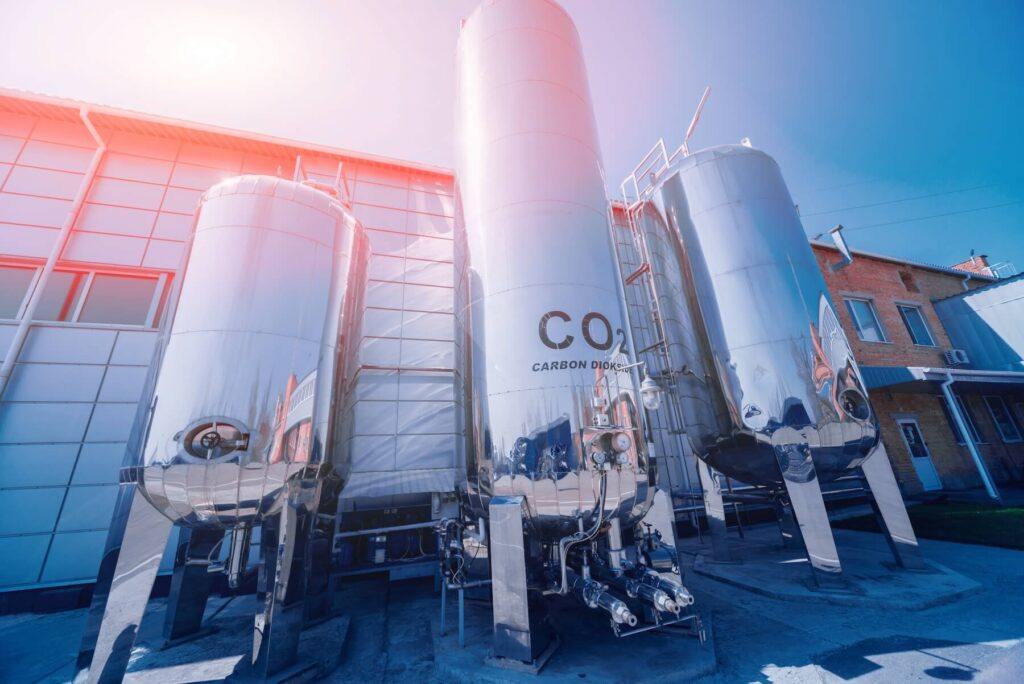Carbon Dioxide
Carbon dioxide (CO₂) — under normal conditions, it is a colorless gas that has virtually no odor.
It can take the form of a colorless liquid (at a temperature of +20 °C and a pressure of more than 6 MPa) or a solid (when the temperature drops to -78 °C).Since CO₂ is a greenhouse gas, the climate on the planet directly depends on its concentration. This is due to the fact that it creates a greenhouse effect — it absorbs and retains infrared radiation. Reducing CO₂ emissions is one of the main tasks in the fight against global warming.

Its source can be both natural phenomena (respiration of living organisms, volcanic eruptions, rotting and decomposition of organic compounds, forest fires, etc.), and artificial ones (fuel combustion products, flue gases, various chemical processes, etc.).Carbon dioxide also finds application in modern industries of beverage production, cooling, food storage, agriculture and chemical industry. For these purposes, CO₂ is mainly isolated from the following sources: natural deposits, industrial by-products (in ammonia production and fermentation processes), combustion of fossil fuels and biogas processing.The cheapest way to transport large volumes of CO₂ is pipeline transport, but such infrastructure is very capital-intensive, and their construction for remote or low-yield sources of carbon dioxide is not economically justified. In such cases, an alternative technology is used: CO₂ is cooled to a liquid state (LCO₂), while its volume is reduced by 600 times, and then transported under excess pressure to the consumer in cryogenic tanks by road, rail or sea transport.At the customer’s request, the NANO Methane Liquefaction Module can be adapted for cost-effective production of LCO₂
